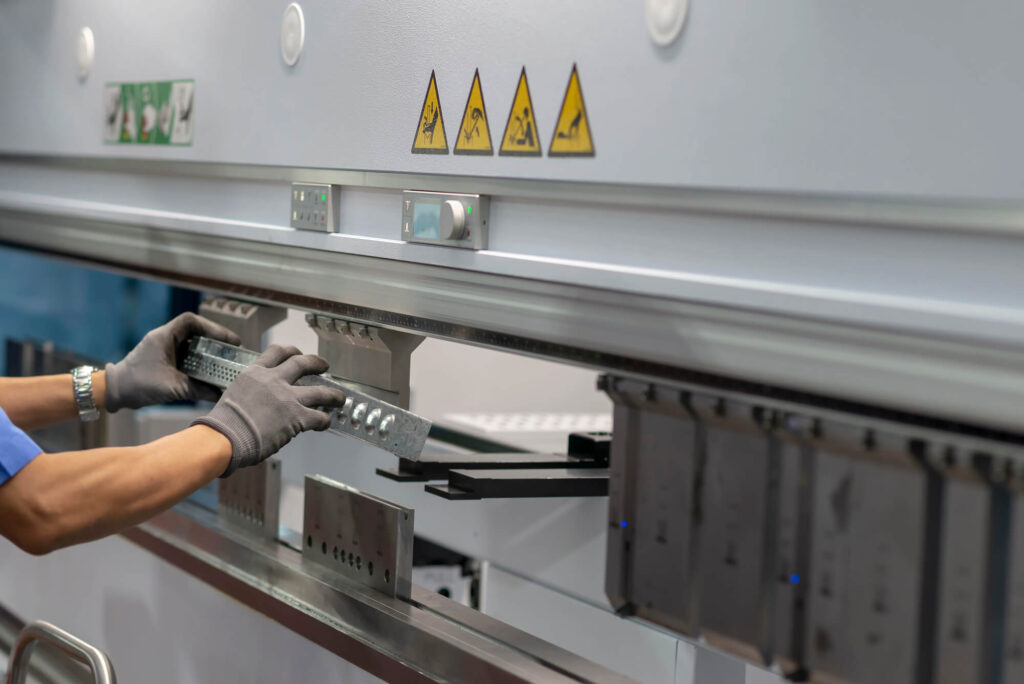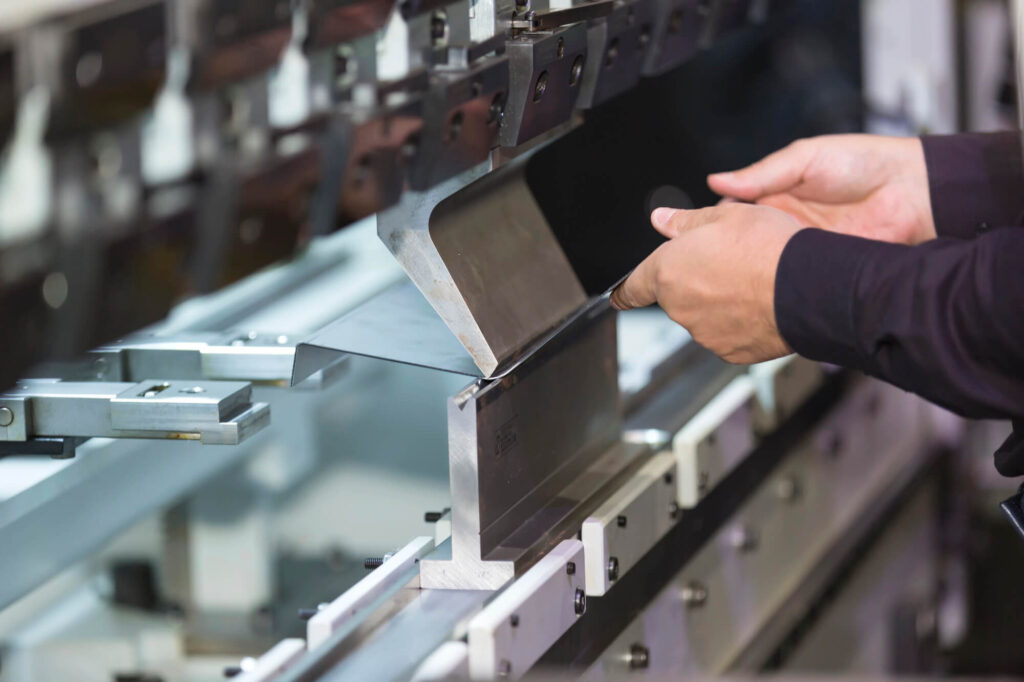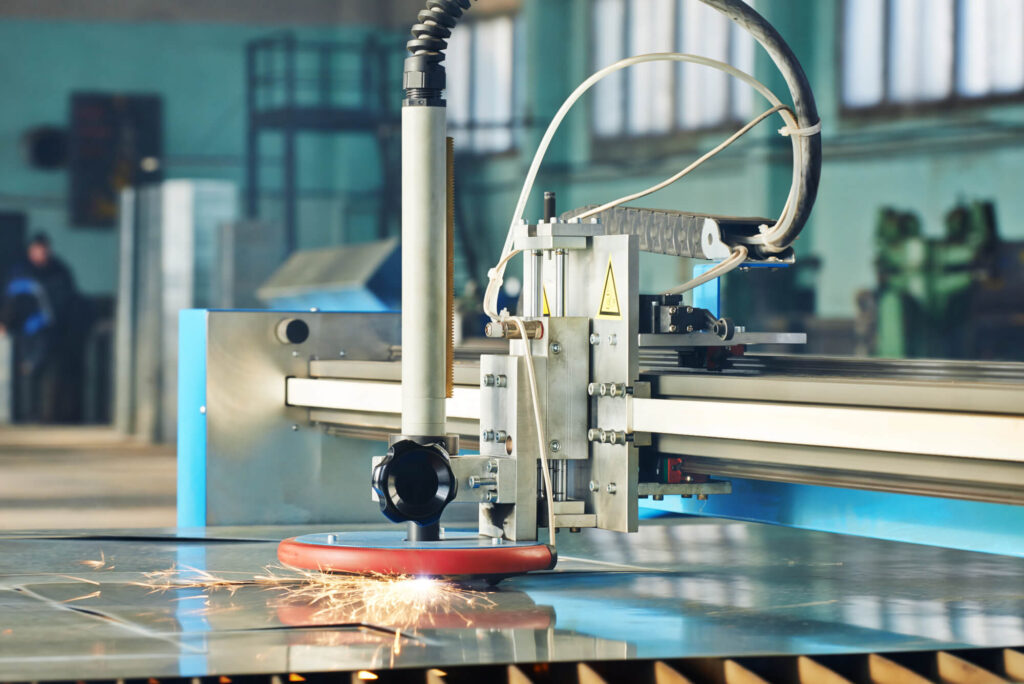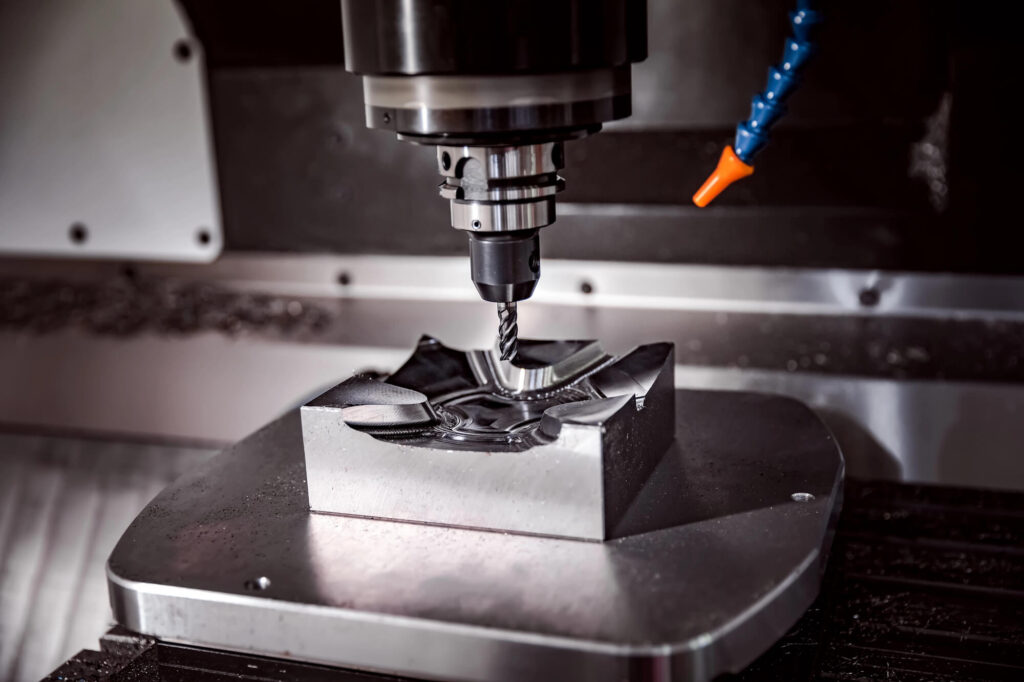Sheet metal manufacturing is one of the bedrocks of modern manufacturing and industry. From the chassis of our cars and the frame of our smartphones to the structural components of aerospace and medical devices, sheet metal fabrication touches nearly every industrial sector.
That might sound like an exaggeration, but after reading our blog post today about the processes, materials, technologies, and trends shaping the sheet metal manufacturing process, you’ll realize just how true that is. We’ll also offer a deep dive into the advanced capabilities of Kenvox, a global leader in custom sheet metal fabrication.
Kenvox offers cutting-edge sheet metal stamping and forming capabilities as well as a vertically integrated production model that includes everything from CNC machining and robotic welding to die casting and powder coating. With operations spanning China and Vietnam, Kenvox provides high-precision, scalable, and efficient solutions for industries worldwide.
What is Sheet Metal Manufacturing?
Sheet metal manufacturing refers to the process of forming and fabricating flat metal sheets into desired shapes and structures. This encompasses sheet metal cutting, bending, punching, stamping, forming, welding, and other techniques used to transform metal stock into usable components.
Materials such as carbon steel, stainless steel, tool steel, and aluminum are commonly used due to their structural integrity and flexibility across applications.
The sheet metal manufacturing process can involve traditional methods like press brakes and stamping as well as modern technologies such as laser cutting, forming, CNC machining, robotic welding, and waterjet cutting. High-strength steels and pre-plated or galvanized steels are often selected based on the end-use requirements, be it durability, corrosion resistance, or aesthetic finish.
Metal Sheets: The Backbone of Industrial Precision
Sheet metal fabrication is essential because it delivers unmatched precision, scalability, and material efficiency for several industries, including (but not limited to):
- Automotive
- Aerospace
- Medical
- Consumer electronics
All of these depend on the cost-effective nature of sheet metal forming to bring complex designs to life quickly and accurately. Whether it’s producing lightweight enclosures, structural supports, or intricate brackets, sheet metal offers the mechanical properties and flexibility needed to meet stringent standards.
Moreover, with growing demands for speed-to-market, custom sheet metal fabrication allows for fast prototyping, rapid iteration, and low- to high-volume production cycles. From hot-rolled steel for structural rigidity to cold-rolled steel for smooth surface finishes, manufacturers can tailor their approach to suit a wide range of product categories.
Kenvox’s Role in Global Manufacturing Excellence
Kenvox stands at the intersection of precision and efficiency in sheet metal manufacturing. Leveraging decades of experience and industry-leading technology, Kenvox transforms high-grade metal materials into complex products with unmatched accuracy. Their comprehensive offering includes sheet metal stamping, CNC machining, robotic MIG welding, TIG welding, and powder coating; all integrated under robust ERP and QA systems.
With its Vietnam facility spanning over 12,000 square meters, the company brings together state-of-the-art machines for stamping, punching, forging, and coating. This positions Kenvox as a go-to partner for brands seeking custom metal fabrication solutions that are globally scalable and technically superior.

Sheet Metal Manufacturing Techniques Used Across the Industry
Sheet metal fabrication employs dozens of techniques for different metal materials and purposes, although a handful stand out as fundamental and most common for creating metal products and parts from sheets.
Laser Cutting
Laser cutting is a cornerstone of modern sheet metal fabrication. This precise, non-contact process uses a high-powered laser beam to slice through metal materials, achieving clean edges and tight tolerances. It’s ideal for custom sheet metal fabrication involving complex geometries or delicate components, and works effectively with materials like stainless steel, carbon steel, and aluminum.
Waterjet and Plasma Cutting
Waterjet cutters use a high-pressure jet of water mixed with abrasive substances to cut through thicker materials without introducing heat. This makes it suitable for cutting heat-sensitive materials like pre-plated steel or tool steel. Plasma metal cutting, on the other hand, uses electrically ionized gas to cut conductive materials, offering speed and cost-effectiveness for high-volume jobs.
Sheet Metal Bending with Brake Press Machines
Using press brake machines, sheet metal can be bent into complex shapes without compromising material strength. Press braking is widely used in applications requiring precise angles and folds, from enclosures and brackets to chassis frames. Press hardening may also be applied to increase the metal’s structural integrity post-formation.
Metal Welding – MIG, TIG, and Spot Welding
Welding joins metal parts together permanently. TIG welding excels in thin-gauge stainless steel and aluminum, offering high precision. MIG welding is widely used in carbon steel applications and is favored for its speed and adaptability. Spot welding is a cost-efficient solution for joining overlapping sheet metal components, while robotic MIG welding ensures consistency and high throughput.
Punching: Versatile Precision
Punching machines are integral to custom sheet metal fabrication. They create holes or cut-outs in metal sheets with unmatched repeatability and minimal waste. Especially effective in high-volume production, punching is essential in the formation of metal structures that will serve as electrical enclosures, automotive panels, and ventilation components.
Forming and Rolling Processes
Forming involves reshaping sheet metal without removing material. This includes rolling techniques to produce cylindrical or curved parts, as well as other forming operations like flanging or embossing. These techniques are critical in fabricating metal structures like ducts, tanks, and structural reinforcements used across many industries.
Key Sheet Metal Materials in Manufacturing
The choice of metal materials plays a pivotal role in determining the functionality, durability, and cost-efficiency of sheet metal fabrication projects. Here are the primary sheet metal materials used across industries.
- Carbon Steel: Carbon steel is the workhorse of sheet metal manufacturing. Known for its strength and affordability, it is widely used in automotive, construction, and industrial equipment. It’s available in hot-rolled and cold-rolled variants, with each offering unique advantages in formability and surface finish.
- Stainless Steel: Highly resistant to corrosion and staining, stainless steel is a top choice for medical devices, kitchen equipment, and outdoor applications. It offers excellent durability and aesthetic appeal, making it suitable for parts that need to endure environmental exposure without compromising on appearance.
- Tool Steel: Tool steel is prized for its hardness, resistance to abrasion, and ability to retain a cutting edge. Used primarily in tools, dies, and wear-resistant applications, it’s less common for general sheet metal fabrication but critical in high-impact or high-precision components.
- Aluminum: Aluminum offers an optimal strength-to-weight ratio, making it essential in aerospace, electronics, and automotive applications.
- Specialty Alloys: Specialty alloys such as pre-plated or galvanized steel further extend capabilities, offering benefits like rust resistance, increased hardness, or better thermal conductivity depending on the alloy composition.
From Blueprint to Build: Essential Steps in Sheet Metal Fabrication
The sheet metal manufacturing process has made life easier for the entire world by allowing strong and versatile metal sheets to be processed into a wide range of products. Continue to ensure a clear grasp of the basic steps of how these metal raw materials evolve into precision components.
- CAD Design and Digital Prototyping: The journey begins with computer-aided design (CAD). Engineers create digital blueprints that define dimensions, tolerances, and materials. CAM software then converts these into machine-readable code, enabling CNC systems to replicate designs with microscopic precision.
- Material Selection and Quality Verification: Selecting the right material, be it hot-rolled steel, aluminum, or stainless steel, depends on structural, environmental, and budgetary factors. All incoming metal stock undergoes rigorous inspection to meet quality control benchmarks and client specifications.
- The Sheet Metal Forming Process: Raw sheets are cut using laser cutting, waterjet cutting, or plasma cutting based on project requirements. Sheet metal forming operations follow, using press brakes for bending and stamping machines for embossing or shaping. Punching machines add precise openings or perforations as needed.
- Assembly and Welding Techniques: Sub-components are assembled and joined using welding methods tailored to the material and application. MIG welding excels in carbon steel structures, TIG welding in delicate or thin-gauge parts, and robotic MIG welding ensures consistency in mass production.
- Finishing Operations: Coatings, Painting, Phosphating: Surfaces are treated to enhance durability, conductivity, or aesthetics. Processes like powder coating, oil painting, and phosphating are used depending on the final application, whether for industrial, consumer, or medical-grade use.
- Final QA and Inspection Systems: Before shipping, all parts undergo dimensional inspection, functional testing, and surface quality assessments using advanced QA tools. Kenvox’s ERP-integrated system ensures real-time traceability and compliance with global manufacturing standards.
Tooling and Technology in Modern Sheet Metal Fabrication
The modern sheet metal manufacturing process is powered by an advanced toolset that enhances productivity, precision, and scalability. Here’s a look at the most impactful technologies in today’s fabrication facilities.
- CNC-Controlled Equipment: Computer Numerical Control (CNC) machines bring automation, speed, and microscopic precision to tasks such as drilling, cutting, and shaping. They interpret CAD data to execute complex geometries and maintain consistency even across high-volume production when metal forming.
- Press Brakes and Stamping Dies: Press brakes are essential for bending operations, and with digital controls, they can apply uniform pressure and exact angles on each piece. Stamping dies are customized tools used to cut, form, or emboss sheet metal during the stamping process.
- Robotic Welding Stations: To meet the high standards of structural integrity and production speed, robotic welding stations perform MIG and TIG welding with flawless accuracy. These systems are integral in mass production environments, offering consistency and minimal rework.
- Advanced Coating and Painting Lines: Kenvox employs automated lines for powder coating, oil painting, and phosphating. These systems provide protective and aesthetic surface treatments while reducing waste and ensuring consistent finish quality.
- Real-Time ERP and QA Integration: Kenvox integrates its custom ERP system with QA stations for end-to-end visibility. This includes digital tracking of materials, real-time production data, and automatic logging of inspection results, ensuring compliance with ISO and customer-specific standards.

Advantages of Sheet Metal Manufacturing
Why do manufacturers consistently choose sheet metal fabrication for high-performance, cost-effective solutions? Because it offers numerous advantages over other types of metal works, with the top four being:
Structural Versatility
One of sheet metal’s greatest advantages is its adaptability. It can be cut, bent, stretched, punched, and welded into a myriad of shapes and structures. Whether you’re producing lightweight enclosures, structural brackets, or complex panels, sheet metal forming supports diverse applications without compromising strength.
High Precision with Repeatability
Thanks to modern CNC-controlled systems, robotic welding, and automated press brakes, manufacturers can achieve exact tolerances repeatedly. The high precision is essential for mass production and industries like aerospace or electronics, where consistency is non-negotiable.
Cost Efficiency Through Scale
Once tooling and design are finalized, sheet metal processes, especially stamping and punching, enable high-volume output at low per-unit costs. This makes it ideal for OEM production lines where margins depend on efficiency and repeatability.
Short Turnaround Cycles
With advanced digital prototyping, streamlined ERP systems, and automation across cutting, forming, and finishing stages, sheet metal projects move swiftly from concept to delivery. Short turnaround cycles support faster product launches and responsive supply chains, which are critical in today’s market.
Industries and Products Powered by Sheet Metal
Sheet metal fabrication plays an indispensable role across multiple industries, offering the strength, precision, and adaptability needed for an array of products.
- Automotive: Sheet metal is foundational in the automotive sector. From chassis and body panels to brackets and enclosures, high-strength steel and aluminum are used to create durable, lightweight structures that meet rigorous performance and safety standards.
- Consumer Electronics: In the electronics industry, sheet metal is used for casings, brackets, and heat sinks. Materials like aluminum and stainless steel provide thermal management, electromagnetic shielding, and sleek, corrosion-resistant surfaces for devices and equipment.
- Aerospace: Aerospace demands high-strength-to-weight ratios and tight tolerances. Sheet metal fabrication supports the production of aircraft interiors, control panels, ductwork, and structural sub-assemblies using lightweight materials such as aluminum and titanium alloys.
- Medical Devices: Medical-grade stainless steel and coated alloys are employed in the fabrication of surgical tables, diagnostic enclosures, and support structures. Precision and hygiene are paramount, making custom sheet metal fabrication an ideal choice for this sector.
- Home, Outdoor Equipment, Baby Products, and More: Beyond industrial and technical uses, sheet metal is found in everyday consumer products, from kitchen appliances and cookware to baby gates, garden tools, and sports equipment, delivering reliability, form, and function in mass-produced designs.
Core Challenges in Sheet Metal Fabrication Process
Despite its advantages, sheet metal manufacturing presents a series of engineering and production challenges that manufacturers must skillfully navigate to deliver high-quality outcomes.
Achieving Tight Tolerances in Multi-Stage Fabrication
Maintaining micron-level tolerances across multiple fabrication stages is complex. Variations in material behavior, tool wear, or even environmental factors can cause dimensional shifts that affect part fitment or performance. Sophisticated CNC machines and precision calibration help mitigate these risks.
Managing Material Deformation in Stamping and Punching
The force applied during metal forming, from stamping or punching, can deform thin metal sheets, especially in high-strength or pre-plated metals. Controlling material flow, using the right dies, and implementing simulation-driven tooling designs are essential for preserving structural integrity.
Reducing Waste While Scaling Up
Scaling production without increasing material scrap is a balancing act. Efficient nesting algorithms, accurate cutting paths, and modular die designs can significantly reduce waste and increase material utilization rates.
Ensuring Global Compliance and Consistent QA
Products manufactured for international markets must meet diverse regulatory standards (ISO, IATF, RoHS, REACH). Establishing unified quality assurance systems and real-time ERP integration ensures every part complies with specifications, regardless of where it is produced.

Emerging Trends in Sheet Metal Manufacturing
The sheet metal industry is rapidly evolving with technological advancements and sustainable practices shaping its future. Below are some of the most impactful trends redefining the field.
- Integration of AI: Artificial intelligence is enhancing CNC machining by optimizing tool paths, predicting maintenance needs, and adapting to material inconsistencies in real-time. When linked with ERP systems, AI enables dynamic scheduling and inventory management, increasing productivity and reducing downtime.
- Digital Twins and Smart Simulation: Digital twins create virtual models of physical manufacturing processes, enabling simulation, testing, and optimization before actual production. This approach significantly improves design accuracy, minimizes trial-and-error, and reduces material waste.
- Green Manufacturing Initiatives: Sustainability is becoming a core manufacturing priority. Sheet metal fabricators are investing in energy-efficient machines, closed-loop waterjet cutting systems, and waste recycling protocols. Eco-friendly coatings and water-based paints are also gaining popularity.
- Automated Inspection and Predictive Maintenance: Advancements in machine vision and sensor-based diagnostics now allow real-time inspection and predictive maintenance. These systems detect wear, misalignment, or contamination before issues escalate, ensuring consistent quality and longer equipment life.
Kenvox’s Precision Sheet Metal Manufacturing Capabilities
Kenvox excels at delivering high-precision, high-volume sheet metal solutions tailored to meet the evolving needs of global industries. Through its vertically integrated infrastructure, the company offers precision sheet metal manufacturing and complete metal fabrication services with exceptional quality control and scalability.
Core Services:
Kenvox’s core sheet metal services include:
- Stamping: High-speed presses for volume production of precise, repeatable parts.
- Punching: Automated punching machines for customizable cut-outs and holes.
- Bending: Advanced press brakes for exact angular formations.
- Laser Carving: Intricate detailing and high-definition cuts with minimal waste.
- Blanking: Efficient shaping of parts from flat sheet metal.
- Welding: MIG, TIG, spot welding, and robotic MIG welding for structural reliability.
Material Mastery
Kenvox expertly handles a wide range of materials, including:
- Steel: Including carbon steel, tool steel, hot-rolled, and cold-rolled variants.
- Aluminum: Lightweight, corrosion-resistant, ideal for electronics and aerospace.
- Tool Steel: Engineered for durability in high-impact applications.
High Precision + High Volume: The Dual Advantage
Combining tight tolerance capabilities with mass production throughput, Kenvox leverages state-of-the-art CNC, stamping, and QA systems to deliver consistent, high-quality parts at scale. This dual competency ensures a reliable supply for both prototyping and long-term production contracts.
ERP-Integrated Production and QA Frameworks
Kenvox’s proprietary ERP platform synchronizes all stages of the sheet metal manufacturing process, from CAD file management to final inspection. Each unit is traceable, quality-verified, and documented to meet ISO, IATF, and industry-specific standards.

Beyond Sheet Metal: Kenvox’s Broader Metal Fabrication Portfolio
In addition to sheet metal expertise, Kenvox delivers comprehensive metal fabrication capabilities that cover the full spectrum of industrial applications.
Die Casting for Intricate Structural Metal Parts
Kenvox utilizes high-precision die casting to manufacture complex sheet metal parts with tight tolerances and smooth surface finishes. This process is ideal for mass-producing components in automotive, electronics, and consumer goods where repeatability and form integrity are crucial.
Forging for Heavy-Duty and Structural Reliability
Advanced forging machines shape sheet metal under intense pressure, enhancing strength and durability. Kenvox’s forging capabilities are well-suited for load-bearing and safety-critical applications across industrial and transportation sectors.
CNC Metal Machining for Precision Components
CNC machining complements Kenvox’s stamping and casting processes by providing high-precision finishing and drilling for complex geometries. It ensures exact tolerances for components requiring intricate detailing or post-processing.
Integration of All Processes for One-Stop OEM/ODM Manufacturing
Kenvox combines its sheet metal, casting, forging, machining, and surface treatment facilities under one roof. This integrated approach streamlines production, reduces lead times, and enables seamless quality control from prototype to mass production.
Metal Extrusion for Customized Profiles
Metal extrusion is a dynamic metal-forming process used to create parts with a consistent cross-sectional profile, known as “extrudates.” During this process, a cylindrical billet is forced through a die using mechanical or hydraulic pressure, resulting in precise and uniform shapes. This method, initially patented by Joseph Bramah and first applied by Thomas Burr for lead pipes, has evolved to accommodate various materials including aluminum, copper, steel, magnesium, and lead. Kenvox leverages this versatile technique to deliver tailored solutions that meet specific design and function requirements, enabling customized profiles widely used in construction, transportation, and consumer electronics.
Spotlight: Kenvox’s Metal Factory in Vietnam
At the heart of Kenvox’s global manufacturing capabilities is its advanced facility in Vietnam, operated as “ARTIZAN KENVOX TECHNOLOGY (VIETNAM) CO., LTD”, where precision engineering meets large-scale production capacity.
This state-of-the-art facility, located in Bắc Giang Province, spans over 12,000 square meters. It represents Kenvox’s commitment to regional expansion, optimized logistics, and enhanced client collaboration in Southeast Asia.
Strategically positioned for access to both local and international markets, the plant supports rapid distribution, strong workforce access, and cost-efficient manufacturing.
Facility Capabilities:
Kenvox’s Vietnam factory is outfitted with cutting-edge production and quality systems, including:
- Metal Stamping and Punching: High-speed and high-precision lines for scalable production.
- Welding: MIG, TIG, spot, and robotic welding stations for durable assembly.
- Die-Casting, Forging, Extrusion: Comprehensive shaping technologies for structural integrity.
- CNC Machining: Precision milling, drilling, and surface treatments.
- Coating and Painting Lines: Automated powder coating, oil painting, and phosphating for protective sheet metal finishes.
- Quality Control: Advanced QA tools and ERP-integrated inspection systems ensure consistent compliance with ISO9001, ISO14001, ISO13485, and IATF16949 standards.
Why Choose Kenvox for Your Sheet Metal Manufacturing Needs
- Kenvox stands out with over 34 years of experience in the sheet metal manufacturing industry, showcasing a long-lasting commitment to excellence and innovation.
- Our certified systems guarantee high-quality standards and environmental management practices.
- We offer comprehensive in-house quality control and engineering solutions, paired with global project management expertise to ensure your project’s success from start to finish.
- With a strong multinational presence and fully integrated vertical capabilities, Kenvox is well-positioned to meet diverse manufacturing needs efficiently and effectively.
Scaling Precision with Kenvox
From raw material to final product, Kenvox exemplifies what modern sheet metal manufacturing should be: precise, efficient, innovative, and globally connected.
Whether you need advanced stamping, high-volume CNC production, or fully integrated OEM/ODM support, Kenvox delivers unmatched capabilities backed by over 34 years of excellence.
In an era where speed, quality, and sustainability matter more than ever, partnering with Kenvox means aligning with a manufacturer that’s not only technically proficient but also deeply committed to your long-term success.
Contact Kenvox today to discover how their comprehensive metal fabrication solutions can bring your next project to life with precision and scale.



